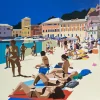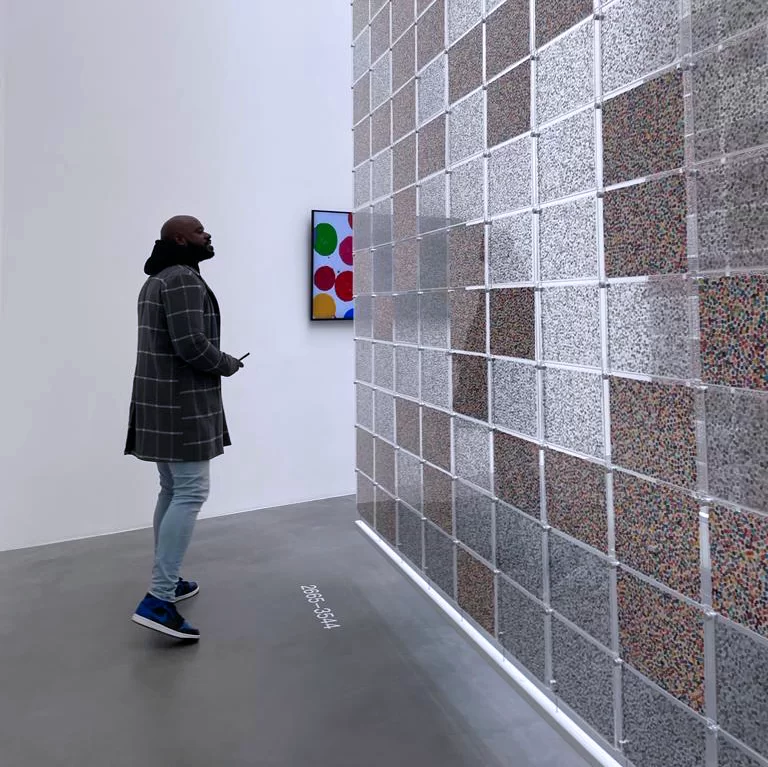As curator of Vienna Digital Cultures 2025 and director of the newly relaunched Autotelic Foundation, Dr Nadim Samman explores model collapse, artistic experimentation, and the generative potential of failure.
As machine learning continues to reshape everything from creativity to governance, few curators are confronting its implications as incisively as Dr Nadim Samman. The Berlin-based curator and philosopher is leading Vienna Digital Cultures 2025, a festival anchored by the theme “Model Collapse”—a phrase that encapsulates the systemic failures of our time, from generative AI dysfunction and ecological breakdown to the fragmentation of political discourse and the erosion of shared truths.
For Samman, model collapse is far more than a technical flaw. He sees it as “a metaphor for the kinds of epistemic, political, and ecological unravelings we’re all witnessing.” In his view, these are not isolated breakdowns: “These systems—whether computational or cultural—aren’t collapsing in isolation. They’re entangled.”
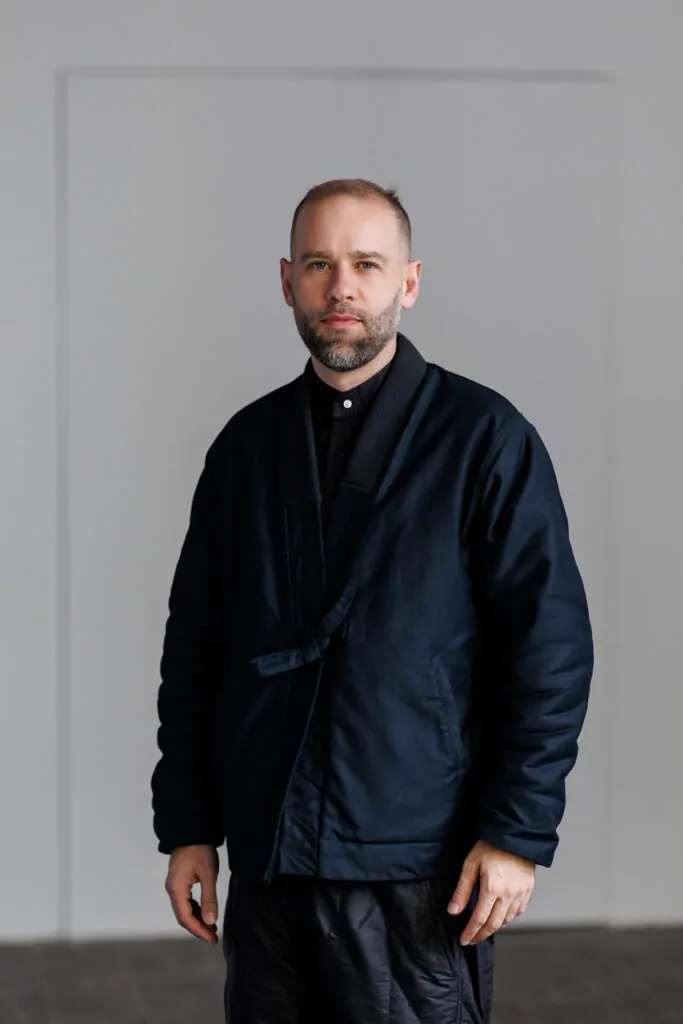
Credit © Frank Sperling
Curating across disciplines—especially at the intersection of art, theory, and technology—requires resisting the urge to make everything legible in the same way
Nadim Samman
That sense of entanglement—between technologies and societies, systems and meanings—also drives Samman’s latest initiative: the launch of the Autotelic Foundation, a UK-based charity devoted to supporting interdisciplinary artistic practice. Formerly known as the Blessed Foundation, the organisation has re-emerged under his direction with a sharpened vision and an expanded mission. Its new name, Autotelic—drawn from the Greek for “an end in itself”—signals a commitment to artistic inquiry that resists instrumentalisation and refuses to be governed by market logic.
This ethos aligns closely with Samman’s curatorial approach, which prioritises risk, friction, and conceptual depth over commercial spectacle. He describes the foundation’s values as a commitment to work “that isn’t shaped by commercial viability or institutional decorum,” and adds that, “Value can mean cultural friction, emotional resonance, or speculative risk. We want to support that.”
Through new commissions, international collaborations, publishing, residencies, and educational initiatives, the Autotelic Foundation supports both established and emerging voices at the intersection of art, technology, and theory. It positions itself not simply as a platform for art, but as a structure for sustained engagement with the complex realities of the digital age.
Samman is well known for curatorial projects situated in liminal or extreme zones—from Antarctica to decentralised digital spaces—and he sees these environments not as peripheral, but as crucial vantage points. “Liminal zones are where existing systems start to lose their coherence,” he says. “That’s what draws me to them. They’re unstable, often uncomfortable, but they open up rare opportunities to perceive the world differently.”
In a cultural climate increasingly shaped by tech spectacle and commercial pressures, Samman’s work offers an alternative: a curatorial practice grounded in philosophical inquiry and the belief that complexity is not a barrier, but an entry point. He sees collapse not as a terminal state, but as a generative moment—a threshold. “Collapse doesn’t just signal an end—it creates a threshold of transformation,” he says. “It’s a chance to reconfigure. That’s not dystopian—it’s hopeful.”
Both Vienna Digital Cultures and the Autotelic Foundation embody this outlook, creating spaces where art and critical thought can challenge dominant narratives and explore new configurations of meaning, value, and form.
The theme “Model Collapse” connects the technical failures of machine learning with broader societal breakdowns—from politics to ecology. What drew you to this metaphor as the curatorial anchor for Vienna Digital Cultures 2025?
Nadim Samman: “Model Collapse” emerged as a curatorial anchor for Vienna Digital Cultures 2025 because it encapsulates a convergence of crises—technical, ecological, political, and epistemic—that are increasingly impossible to consider in isolation. In machine learning, model collapse refers to a degradation of generative AI systems, resulting in outputs that are repetitive, biased, and/or hallucinatory.
But this isn’t just a technical anomaly; it’s a potent metaphor for what’s happening at a societal level. We’re witnessing similar forms of collapse in public discourse, political reasoning, and ecological systems—each feeding off distorted inputs, failing to regenerate diversity, nuance, or truth. “Model Collapse” is also a way to foreground the entanglement between computation and culture. These aren’t separate domains. When machine learning models start collapsing, they don’t just produce technical artefacts—they reverberate through art, labour, justice, and sense-making.
How do you curate across disciplines—bringing together artists, theorists, and technologists—without flattening their differences? What’s your process for assembling a programme that’s both conceptually rigorous and publicly engaging?
Nadim Samman: Curating across disciplines—especially at the intersection of art, theory, and technology—requires resisting the urge to make everything legible in the same way. The differences between how an artist, a theorist, or a technologist approaches a problem aren’t obstacles to overcome; they’re what can make a programme vital! A successful programme needs a kind of curated tension—moments where disciplines clash and something new becomes visible in the friction.
But it also needs translation. That doesn’t mean diluting complexity; it means designing formats that allow different forms of knowledge to sit alongside each other without being reduced. Sometimes that means a performative lecture instead of a panel. Sometimes it’s an installation that invites participation, or a workshop. As for public engagement: the key is trust. Audiences are more sophisticated than they’re given credit for. If you provide a strong conceptual spine and contextual cues—without over-explaining—you can invite people into complexity rather than shielding them from it.
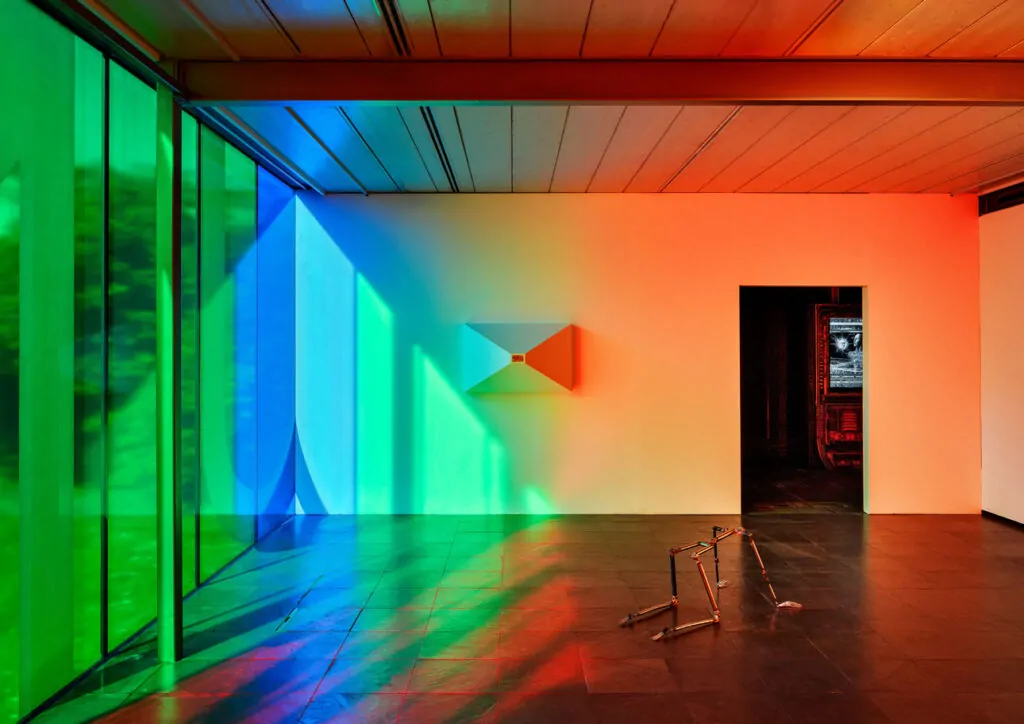
Installation view
Your curatorial work often inhabits transitional or extreme spaces—Antarctica, the digital realm, post-truth politics. What is it about these liminal zones that continues to inspire your curatorial imagination?
Nadim Samman: Liminal zones—whether geographic, digital, or conceptual—are where existing systems start to lose their coherence. That’s what draws me to them. They’re unstable, often uncomfortable, but they also open up rare opportunities to perceive the world differently, to test new forms of knowledge and relation before they harden into habit or ideology.
In Antarctica, for example, you’re confronted with a place that resists most of our inherited categories—national borders, private property, even time itself. It forces you to reckon with scale and fragility in ways that are profoundly disorienting but also creatively generative. Similarly, the digital realm is not just a medium or a tool; it’s a zone where identities and realities are being reconfigured. These are not just extreme environments; they are edge conditions—thresholds where dominant models (of governance, of perception, etc.) begin to break or mutate. That’s exciting.
Vienna Digital Cultures spans everything from browser-based artworks to physical installations and performances. How do you create a sense of coherence in a festival so distributed across formats and platforms?
Nadim Samman: Coherence comes from rhythm, from a conceptual pulse that resonates across various formats. With Vienna Digital Cultures, I viewed the festival as an unfolding conversation—one moving between browser windows, gallery, theatre, nightclubs, and informal gatherings.
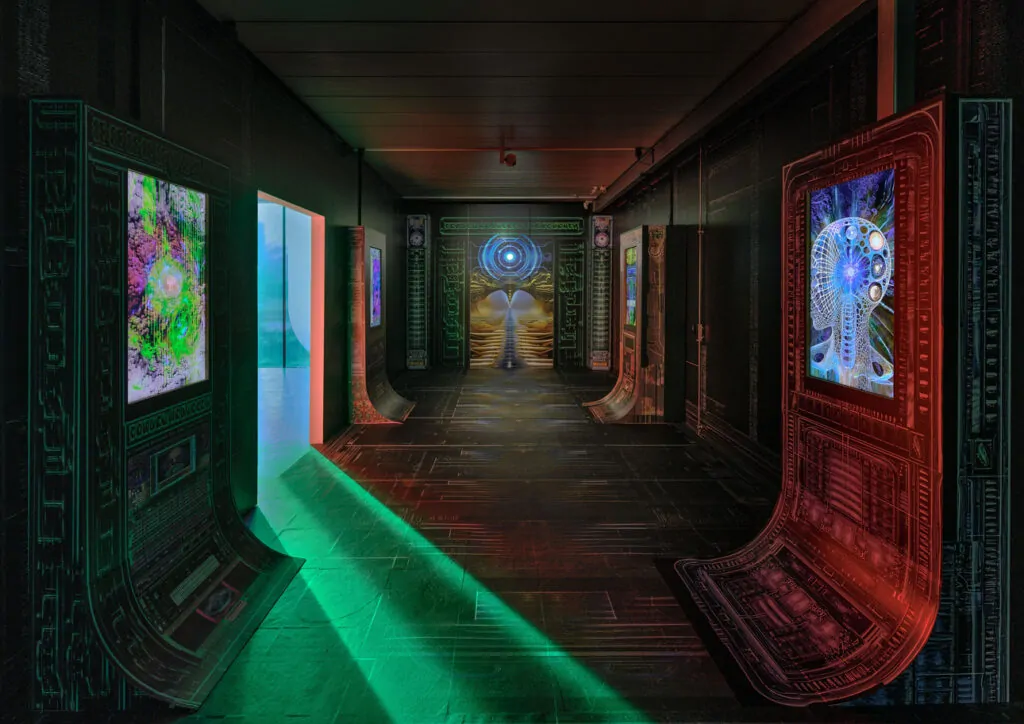
Courtesy of Vienna Digital Cultures 2025
With generative AI entering both mainstream creativity and curatorial discourse, what responsibilities do you think curators now have? Are we simply facilitators, or do we need to become ethicists, critics, even activists?
Nadim Samman: Generative AI is not just a new tool or aesthetic—it’s a structural transformation in how ‘culture’ is produced, circulated, and understood. I don’t think curators can afford to remain neutral facilitators in relation to it. But I don’t think curators are ever neutral! Every decision in a curatorial process—what to include, what to exclude, how to frame, where to stage—conveys a value judgement. Claiming neutrality reinforces subterranean narratives, values, and power structures under the guise of objectivity. Be honest! By the way, politics and taste are the same thing!
The Autotelic Foundation is positioned as a space for “creative exploration without commercial constraint”. In practical terms, how does this philosophy manifest—especially in a global art system that’s increasingly market-driven?
Nadim Samman: We don’t programme based on market trends, scalability, or saleability. Instead, we look for art that is speculative, risky, or in-process—or artists whose work is not limited to the frameworks that commercial systems depend on. This includes research-based practices, interventions, and formats that are deliberately ephemeral or experimental. In a market-driven system, value is often equated with scarcity, exclusivity, or commercial viability. At Autotelic, we’re interested in other forms of value: cultural relevance, critical friction, collective insight, emotional resonance.
You trained in philosophy before entering the curatorial world. How does that background inform your approach to art and technology, particularly when engaging with themes like systems failure or epistemic instability?
Nadim Samman: I think I have a decent foundation for engaging critically with complexity. But its most practical impact is on how I conduct research—especially in fields like media theory, critical technology studies, and the emerging discourses around AI. My background as a ‘reader’ helps me navigate dense theoretical material, identify core concepts, and trace how ideas evolve across disciplines. In curating art and technology, you’re often moving across registers—technical, aesthetic, political, etc. My outlook helps me hold those registers together without flattening them. And I get inspired!

Courtesy of Vienna Digital Cultures 2025
Many of the topics explored at Vienna Digital Cultures—machine learning, collapse, post-truth—can be quite abstract. How do you ensure the work remains accessible without diluting its complexity?
Nadim Samman: I’m not interested in dumbing things down. Complexity isn’t the problem—opacity is. As a curator, my goal is not to simplify challenging ideas, but to create conditions where people can engage with them. Accessibility, for me, means building entry points, not reducing the content. This might involve framing—through writing, contextual notes, or conversations that draw connections between abstract systems and lived experience. It might mean working with artists who translate theory into embodied, visual, or sonic forms, etc. and so on. Accessibility isn’t about dilution—it’s about respect for the audience’s intelligence, and the material’s complexity.
Would you say your curatorial practice is systems-oriented? And if so, how does this shape your approach to exhibition-making, especially in a digital or post-digital context?
Nadim Samman: I’m more interested in the tensions within systems—how individual works, practices, and ideas can disrupt, question, or reflect upon the systems they emerge from. I think of exhibitions as spaces where these tensions can be explored. I like spaces where different media, ideas, and practices clash, collide, and generate meaning through friction, rather than through redundancy.
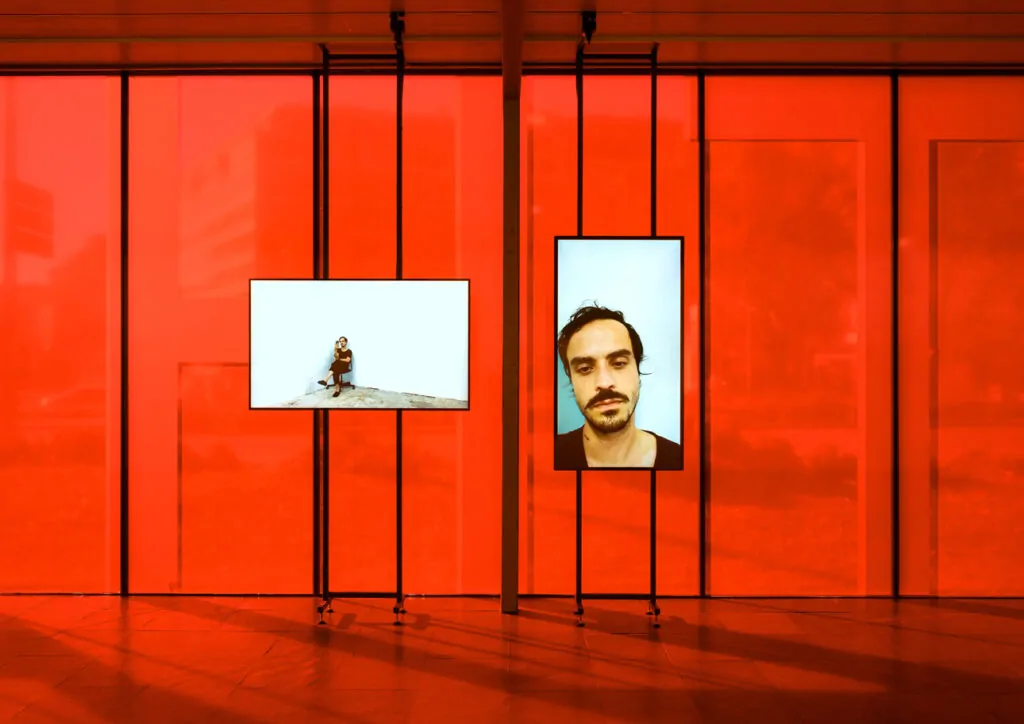
In a moment defined by collapse—of models, systems, perhaps even curatorial traditions—what gives you a sense of creative urgency or optimism?
Nadim Samman: Collapse doesn’t just signal an end—it also creates a threshold of transformation. When systems fail or traditions fracture, the ground becomes fertile for reimagining. The etymology of the word collapse offers an intriguing layer of meaning here. It comes from the Latin collapsus—com- (together) and labi (to slip or fall). So collapse evokes an image not just of falling apart, but of coming together in a different form, a reconfiguration. That’s optimistic!
©2025 Nadim Samman



